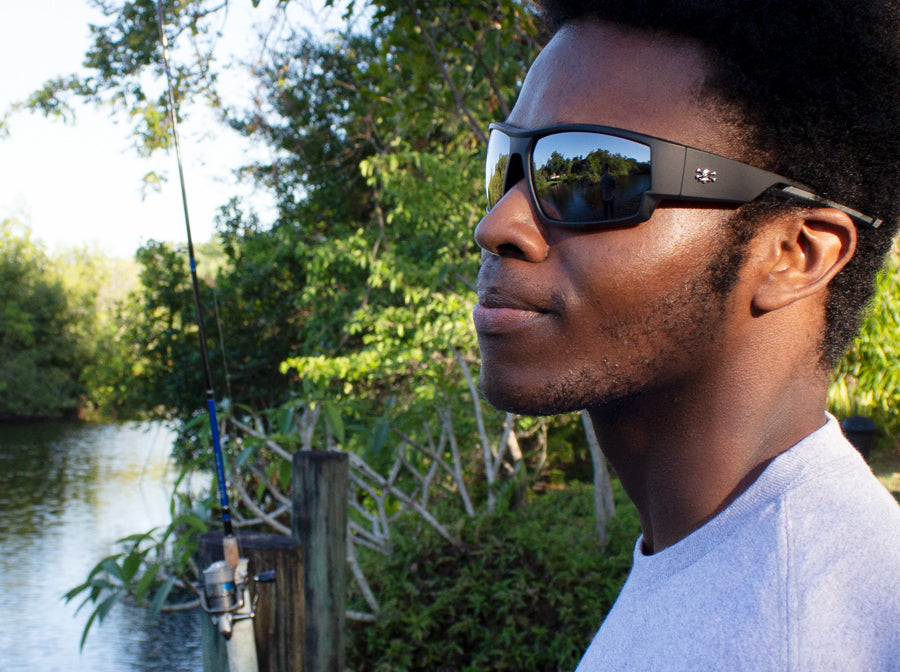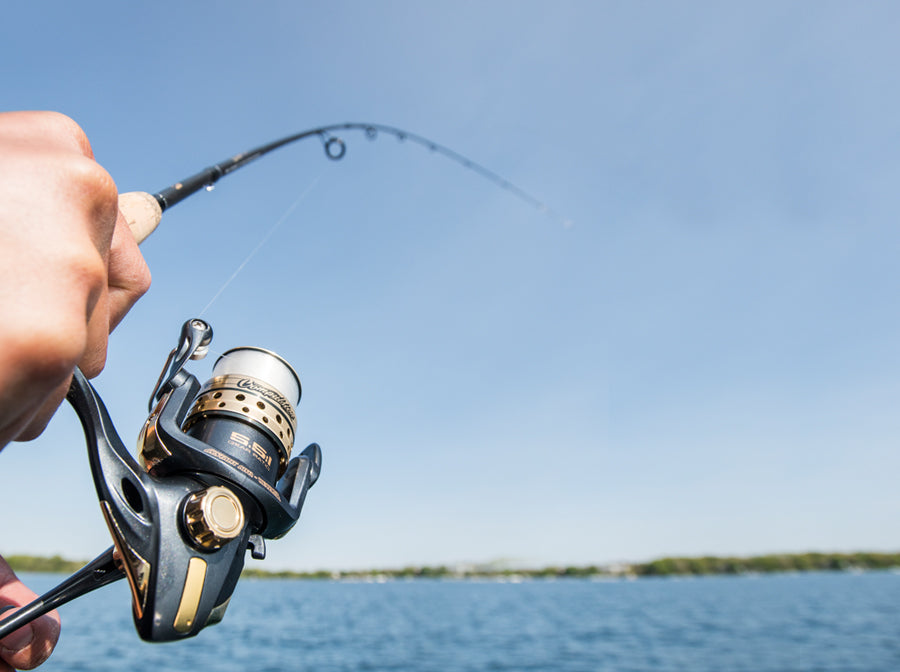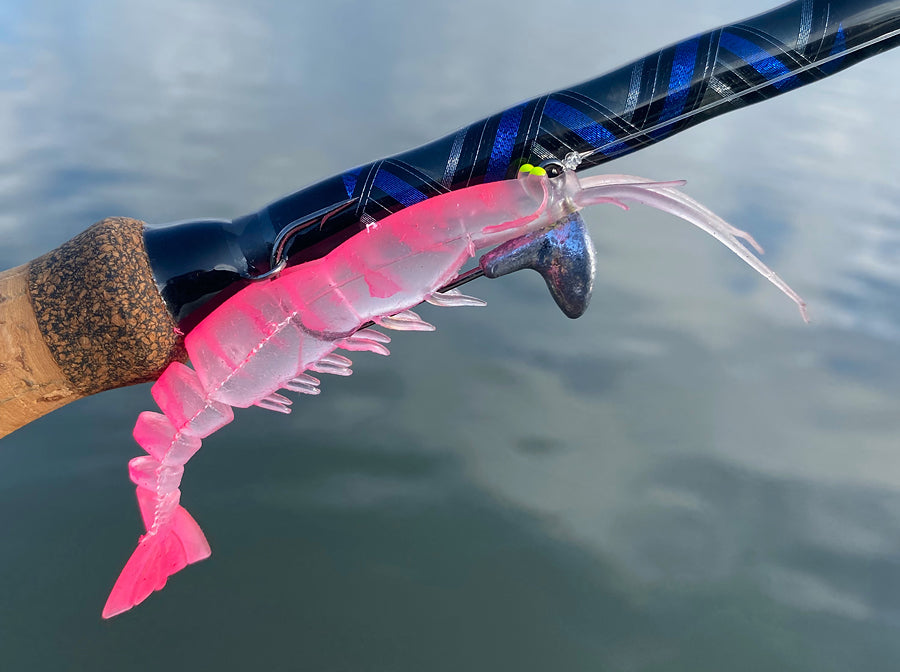Finding fish has always been one of the challenges of fishing. Some days it seems like all the fish have simply disappeared, gone on vacation to other waters. What if they are actually there, but you just can’t see them? Even on cloudy days, sunlight bounces off the reflective surface of water, making it difficult to see anything below. Fortunately, a pair of polarized sunglasses can help you spot fish underwater. We created this guide to explain some of the science behind polarized sunglasses, and to help you find the best pair for your next fishing trip.
Experienced fishing guides, like Capt. Noah of Noah’s Ark Charters, rely on polarized sunglasses.
Polarized Sunglasses Help You See Fish
Fishing guides are experts at spotting fish. They can spy a camouflaged brook trout or bonefish long before their clients. They can see fish that their clients can’t no matter how hard they try. Sure, fishing guides have years of experience and know-how, but they also have another tool they rely on—polarized sunglasses. From sight casting to cobia and redfish to placing a dry fly in front of a waiting trout, polarized sunglasses can help you acquire your target. Charter captains and crew also rely on them when trolling for marlin, mahi mahi, wahoo and other gamefish. Tournament fishermen won’t leave the dock without their favorite pair of polarized shades—and often a backup pair for just in case.
Science Behind Polarized Sunglasses
Polarized sunglasses feature an anti-glare lens coating that filters sunlight in a unique way. The coating blocks horizontal light waves, allowing only vertical light waves to pass through to your eyes. This filter works especially well for fishing because it dramatically cuts glare by blocking the horizontal light waves that are constantly bouncing off the water’s surface. Polarized lenses make everything appear slightly darker, but objects—especially underwater—appear clearer.
Polarized sunglasses cut the sun’s glare when you’re on the water.
Lens Color Matters
Lens color is critical for curbing glare, as well as helping you spot fish and fish-holding structures lurking below.
Amber and Brown Lenses
If you’re fishing in muddy or murky waters, you’ll likely want to don sunglasses with amber or brown lenses. Those tints increase your ability to see objects in the water, making them ideal for fishing rivers, flats and the shallows.
Green Mirror Lenses
Sunglasses with green mirror lenses also improve your ability to see fish in dirty water. They’re a solid choice for fishing cloudy lakes and ponds, and brown coastal waters.
Gray Lenses
Considered “neutral,” gray lenses enable you to see colors accurately. They’re also highly effective at blocking light on bright days, making them a popular choice with fishermen and women.
Blue Mirror Lenses
You’ll often see deep-sea charter captains and crew—as well as inshore saltwater fishing guides—sporting sunglasses with blue lenses. It’s not just because they look badass. Blue lenses combat the harsh glare of sunlight reflecting off large bodies of water.
Polarized Doesn’t Mean High Priced
Designer sunglasses—those brands that cost an entire paycheck or more—often don’t feature polarized lenses. If they do offer polarized versions, expect to pay an even higher premium. The fact is, fashion sunglasses are usually not designed with fishing, and other real-world outdoor activities, in mind. Fortunately, you can find many reliable polarized options that will get the job done without breaking the bank.
Affordable polarized sunglasses often perform better than designer brands.
Not Just for Fishing
Polarized sunglasses have a well-deserved reputation in the fishing community. They’re also popular for a variety of other activities, including paddling canoes and kayaks, boating and driving. Many golfers prefer polarized sunglasses because they cut down on fairway glare. Polarized sunglasses can make a great choice for snow skiing and snowboarding.
Drawbacks of Polarized Sunglasses
Unfortunately, there’s not a perfect pair of sunglasses for every situation. That goes for polarized sunglasses as well. Polarized sunglasses are not the best option for:
-
Driving at night
-
Spotting patches of ice on wintry roads and ski slopes
-
Looking at LCD screens (cell phones, car dashboards, etc.)
Insist on 100% UV Protection
When you’re on the water, you are especially vulnerable to the sun’s harmful ultraviolet (UV) rays. That goes for those cloudy, overcast days as well. There’s no question that UV radiation causes both short-term and long-term damage to your eyes. Always wear sunglasses with an ultraviolet coating that blocks 100% of UVA and UVB rays. If the product description doesn’t clearly state that the sunglasses offer 100% UV protection, shop elsewhere.
Only wear polarized sunglasses that offer 100% UV protection.
Look for a Warranty
A warranty may be the last thing you consider when buying a pair of sunglasses. However, quality shades will have a reputable company standing firmly behind them. Sunglass warranties are usually limited to manufacturing defects. Look for brands that are guaranteed against those types of problems for at least one year.
More Resources:
Performance Sunglasses: Your Best Defense Against the Sun
How to Choose the Best Sunglasses
Guide to Picking the Best Fishing Line
Guide to Freshwater Fishing Rod Action







